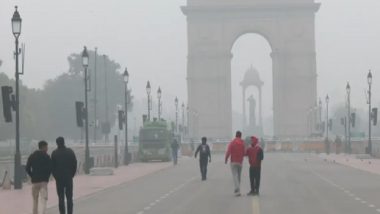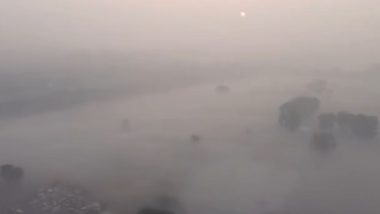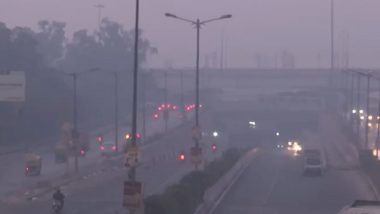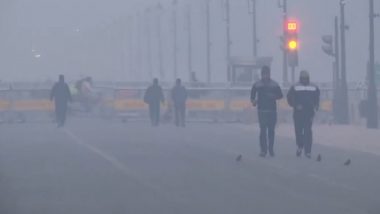New Delhi, November 4: As air pollution in the national capital remains in the 'poor category', a thick layer of toxic foam enveloped the Yamuna River on Wednesday.
As per experts, the reason behind the 'toxic' foam was high phosphate content following discharge of toxic industrial pollutants including detergents into the river.
"Earlier during the days of coronavirus lockdown, Yamuna was clear but now it is covered with dirt. We are not able to breathe properly as air pollution is increasing day by day. The government is doing its own course but we as a citizen should also take steps to combat the situation. People should not throw the dirt into the river. It seems like sewage is flowing into river need to stop it," said a local, BS Rawat. Delhi Air Pollution: Arvind Kejriwal Bans Manufacturing Activity in New Industrial Areas; Only Hi-Tech, Services Industries Permitted.
"Youth is shifting abroad and leaving the country as the air pollution is increasing here, day by day, this fog (Toxic foam) is nothing but the waste that we have thrown into the river. According to our Shastras, the Yamuna River is considered a holy river and as a citizen of this country, we need to act over the issues," said a woman.
Meanwhile, as of November 4, the Air Quality Index (AQI) stood in the 'poor' category, according to the Central Pollution Control Board. The layer of smog engulfed the ITO area. According to the System of Air Quality and Weather Forecasting And Research (SAFAR), Delhi's overall air quality recoded 305 (very poor) in the day-time. An AQI between 0-50 is marked good, 51-100 is satisfactory, 101-200 is moderate, 201-300 is poor, 301-400 is very poor and 401-500 is considered severe.
To tackle the rising air pollution, Central and state government have taken some steps to combat the health emergency but the air quality has been recorded 'poor' and 'very poor' this month. The India Meteorological Department (IMD) had also predicted that Delhi will continue to witness 'poor' air quality for some days.













 Quickly
Quickly




















